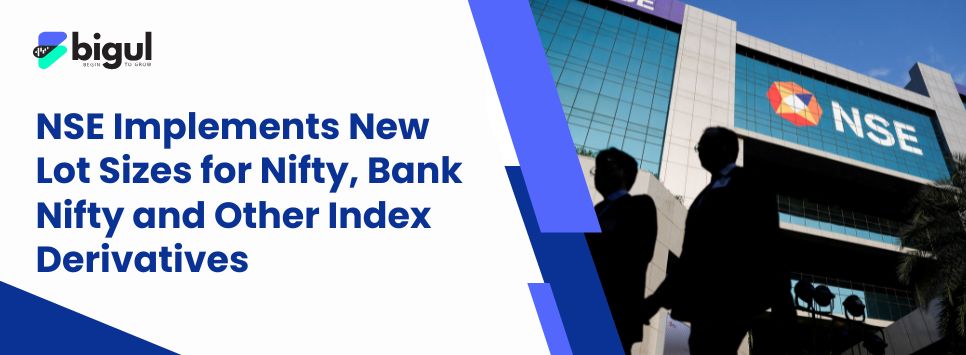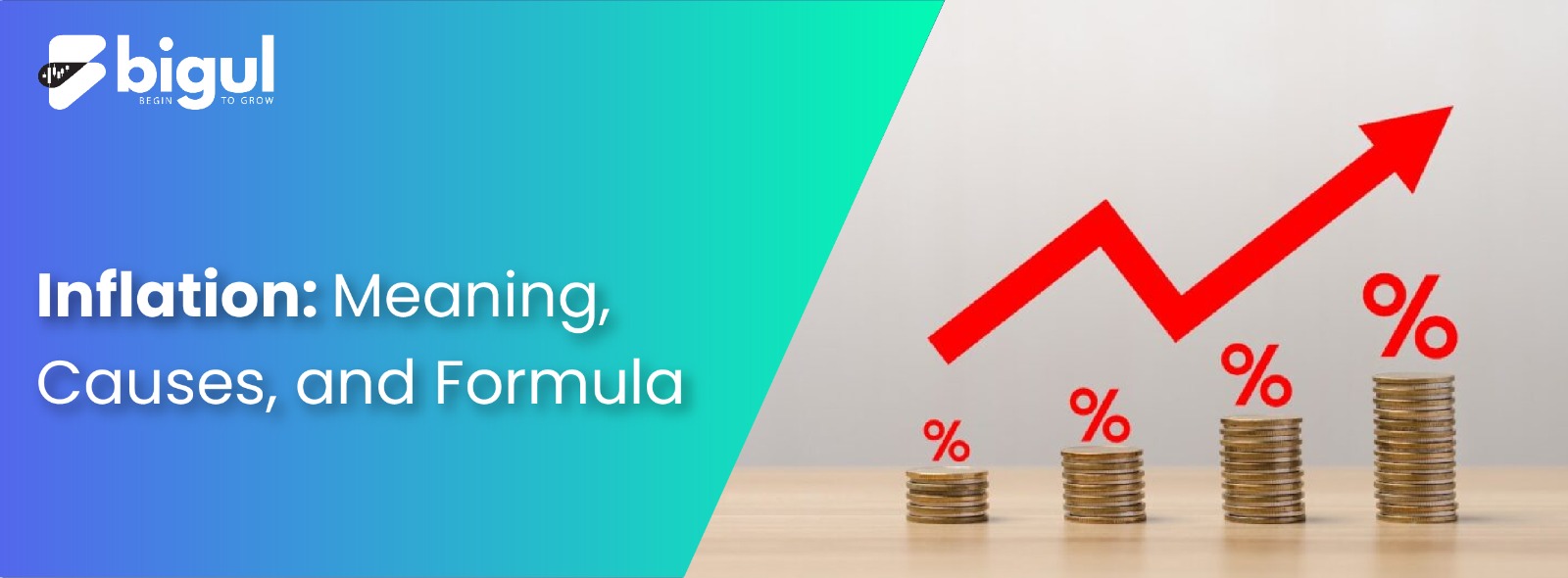Inflation is like a silent price increase that affects our everyday lives. Simply put, it means that the prices of things we buy regularly are going up over time. Ever wonder why your favorite snack costs more now? That’s inflation at work.
Causes can range from increased demand for goods to rising production costs. Understanding inflation is crucial because it impacts our purchasing power.
A basic formula to grasp is:
Inflation Rate= (Current Price Index – Previous Price Index) / Previous Price Index
Let’s discuss everything about inflation, exploring its meaning, causes, and the simple formula that helps make sense of it all.
What is Inflation?
Inflation is a way to measure how the prices of things we buy regularly go up over time. It shows how much less our money can buy. Imagine a basket with common things we purchase, like food and clothes. Inflation tells us how the prices of these things change.
When we say inflation is a percentage, it’s like saying how much prices have gone up or down. If this percentage is higher, it means we can’t buy as much with our money because things cost more. It’s worrying because the value of our money is going down. When inflation goes up, it’s like a signal that our money might not stretch as far and things are getting more expensive.
Different types of Inflation
There are various types of inflation, classified based on different criteria. Here are three common types of inflation:
- Demand-Pull Inflation: Demand-pull inflation occurs when aggregate demand for goods and services surpasses aggregate supply. This heightened demand exerts upward pressure on prices, prompting an overall increase in the price levels within the economy. It reflects a situation where consumers and businesses collectively bid up prices due to increased spending, potentially leading to inflationary pressures.
- Cost-Push Inflation: Cost-push inflation results from increased production costs, like higher wages or raw material prices. When businesses face elevated operational expenses, they pass on these costs to consumers by raising prices for goods and services. This inflationary pressure is driven by supply-side factors, impacting various industries and contributing to a general rise in the overall price level within the economy.
- Built-In Inflation: Built-in inflation is also known as wage-price inflation. It arises when workers demand higher wages, and businesses pass on increased labour costs to consumers through higher prices. This cyclical process perpetuates as higher prices lead to subsequent wage demands, creating a self-reinforcing cycle of inflation driven by the interactions between labour and pricing dynamics within the economy.
How to Calculate the Inflation Rate?
In India, inflation is primarily measured using two ways:
- The Consumer Price Index (CPI)
- The Wholesale Price Index (WPI)
The CPI reflects changes in retail prices of a basket of goods and services consumed by households. Whereas the WPI tracks wholesale price movements. These indices help gauge inflationary pressures, informing policymakers and the public about changes in the overall price level.
To calculate inflation for a specific product using the Consumer Price Index (CPI), follow these steps:
- Identify the product’s rate during an earlier period.
- Determine the current rate of the same product.
Apply the inflation rate formula: (Initial CPI – Final CPI/ Initial CPI)*100. In this formula, CPI represents the rate of the product.
This calculation gives the product price change %. It’s handy for comparing inflation rates throughout time.
Causes of Inflation
Inflation is influenced by a combination of factors. Understanding the main causes of inflation in India involves examining various economic, structural, and policy-related elements.
Some key factors contributing to inflation in India are:
- Demand-Pull Inflation: Demand-pull inflation in India stems from robust economic growth and changing consumption patterns. High growth rates lead to increased demand for goods and services, triggering inflation. Additionally, shifts in consumer behaviour, marked by heightened spending, contribute to the upward pressure on prices as demand outpaces the available supply in the economy.
- Cost-Push Inflation: Cost-push inflation in India results from increased production costs and supply chain disruptions. Elevated expenses for raw materials and labour, coupled with disruptions in the supply chain, force businesses to pass on these higher costs to consumers. This phenomenon, where rising production costs drive overall price levels upward, contributes to inflationary pressures in the country’s economy.
- Monetary Factors: Monetary factors contribute to inflation in India through the growth of money supply and interest rate dynamics. Excessive money supply without a proportional increase in goods and services can spur inflation, while adjustments in interest rates influence borrowing and spending patterns, impacting overall inflation rates. The Reserve Bank of India plays a pivotal role in managing these monetary variables to ensure price stability in the economy.
- Global Factors: Global factors significantly impact inflation in India. Fluctuations in commodity prices, especially oil, influence domestic inflation rates. Additionally, global economic conditions, such as recessions or booms, can affect India’s inflationary trends. The country’s heavy reliance on imports makes it susceptible to external shocks, emphasizing the interconnectedness of the global economy in shaping inflationary pressures in India.
- Exchange Rates: Exchange rates play a crucial role in India’s inflation dynamics. If the Indian rupee depreciates against major currencies, the cost of imported goods rises, amplifying inflation. Additionally, external debt management influences currency valuation, impacting inflation levels. Exchange rate fluctuations contribute to the overall vulnerability of the Indian economy to global economic conditions and commodity price changes.
- Government Policies: Government policies, particularly fiscal measures, significantly impact inflation in India. Expansionary fiscal policies involving increased government spending and lower taxation may stimulate demand but can also contribute to inflationary pressures. Additionally, interventions like subsidies and price controls influence the cost structure. This affects the overall price levels of essential goods and services in the economy.
- Structural Issues: Structural issues in India, such as infrastructure bottlenecks and agricultural challenges, contribute to inflation. Inadequate infrastructure limits production capacities, causing supply shortages. Fluctuations in agricultural output due to factors like monsoons impact food prices, a vital component of the consumer price index. Addressing these structural concerns is essential for maintaining stable inflation levels and sustainable economic growth.
What are the Effects of Inflation?
Inflation affects all sectors of an economy, including the stock market. Here are several inflation implications, including on the Indian stock market:
- Purchasing Power Erosion: Inflation diminishes the purchasing power of money, reducing the real value of savings. As prices rise, consumers can buy fewer goods and services with the same amount of currency. This impacts individual and institutional investors by eroding the real returns on investments.
- Interest Rates and Fixed-Income Securities: When combating inflation, central banks may raise interest rates, impacting yields on fixed-income securities. The consequent competition between stocks and fixed-income instruments influences investor preferences. This can potentially prompt a shift toward the latter for better returns, affecting stock market dynamics in India.
- Corporate Profits and Costs: Inflation increases production costs for businesses. Companies face squeezed profit margins, affecting stock valuations. Sectors capable of passing on costs to consumers may fare better, while others experience pressure on profitability and stock prices.
- Currency Depreciation: Inflationary pressures can lead to the depreciation of the national currency, impacting its exchange rate. Indian companies engaged in international trade may face reduced profitability and competitiveness due to a weaker rupee, influencing stock prices in globally connected markets.
- Speculation and Asset Allocation: In response to inflation, investors may engage in speculative behaviour, adjusting asset allocations based on inflation expectations. This can heighten stock market volatility as investors seek opportunities and hedge against potential risks associated with changing economic conditions and inflationary pressures.
- Real Assets and Inflation Hedge: Inflation prompts investors to seek refuge in real assets like real estate and commodities. Sectors related to tangible assets experience heightened demand as investors view them as a hedge against inflation, influencing stock prices in these sectors.
How Does the Reserve Bank of India (RBI) Control Inflation?
The RBI deploys various monetary policy tools to control inflation. Key measures include:
- Repo Rate: RBI uses the repo rate to influence borrowing costs. By increasing the repo rate, borrowing becomes more expensive, leading to reduced spending and lower inflation.
- Reverse Repo Rate:Adjusting the reverse repo rate affects the interest banks earn on their surplus funds parked with the RBI. Changes in this rate can influence liquidity in the banking system.
- Cash Reserve Ratio (CRR):RBI can alter the CRR, which is the proportion of deposits banks must keep with the central bank. By adjusting this ratio, RBI controls the amount of money banks can lend, impacting inflation.
- Open Market Operations (OMO):RBI buys or sells government securities in the open market to manage liquidity. Selling securities absorbs excess money, curbing inflation, while buying injects liquidity.
- Statutory Liquidity Ratio (SLR):Altering the SLR, the percentage of assets that banks must hold in the form of government securities, gold, or cash, provides another means for RBI to control inflation.
- Policy Rate Corridor:RBI maintains a corridor within which short-term interest rates fluctuate. By adjusting the corridor, RBI can control the money supply and inflation.
- Forward Guidance:RBI communicates its monetary policy stance and future actions to influence expectations and shape market behaviour, impacting inflationary pressures.
- Regulatory Measures:RBI implements prudential norms and regulations to ensure sound lending practices, preventing excessive credit creation that could contribute to inflation.
Is Inflation Good for the Economy of the Country?
Moderate inflation can stimulate economic growth by encouraging spending and investment. It provides room for central banks to implement effective monetary policies. However, high or unpredictable inflation erodes purchasing power, disrupts economic planning, and hampers long-term investments. Striking a balance is crucial to promote a healthy economic environment.
Conclusion
Inflation is a silent thief that quietly erodes the purchasing power of money over time. When prices of goods and services rise, our money buys less, affecting our everyday lives. Governments and central banks work to strike a balance, aiming for stable prices to ensure a healthy economy. It’s crucial for individuals to understand inflation’s impact, adapt financial strategies, and stay informed to navigate the ever-changing economic landscape.




.jpg)





.jpg)
